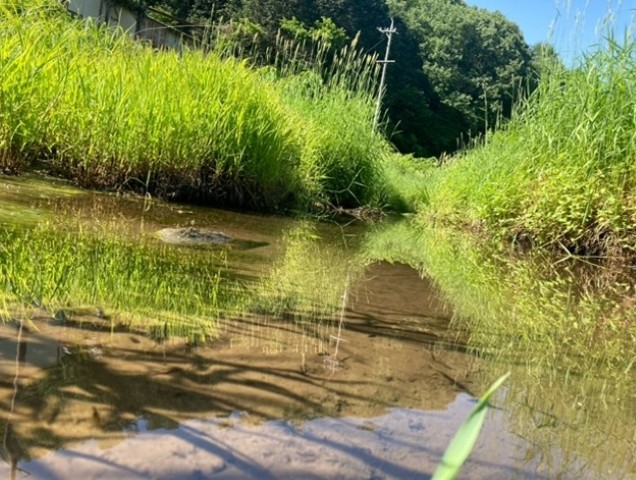Research News
Feb 13, 2025
- Science
Nighthawks: Wild medaka actively court female fish in wee hours
Field observations in natural river environment hold clues to easing model organisms’ life in labs

Medaka's natural behavior
Medaka have been found to be active late at night, with high levels of courtship behavior between 2 a.m. and 3 a.m.
Credit: Osaka Metropolitan University
Observing animal behavior in a laboratory offers a controlled environment, but these model organisms can behave differently in the wild. An Osaka Metropolitan University-led research team that uses medaka in the lab has now clarified certain aspects of how these fish live in their natural environment.
Led by Dr. Yuki Kondo and Professor Satoshi Awata of the Graduate School of Science, the team recorded video of wild medaka in their river habitat to observe what goes on overnight, from 9 p.m. to 5 a.m.
Using this footage taken over a three-day period, they estimated the time of day when medaka spawn, finding that they start to spawn around midnight. Laboratory experiments had previously indicated that medaka spawned around one hour before or after sunrise.

Medaka's natural habitat
Medaka, small fish used as model organisms in the lab, are naturally found in freshwater streams.
The team also conducted a detailed analysis of medaka activity patterns, observing a low level of activity from 9 p.m. to 11 p.m. when many fish seemed to be resting. After midnight, there was a rise in activity, especially between 1 a.m. and 3 a.m. Medaka males appeared to have two types of courtship behavior: chasing females and a courtship display of making quick circles in front of the opposite sex. These behaviors were particularly high between 2 a.m. and 3 a.m.
“Observing animals in the wild is a valuable source of information for understanding their natural way of life, information that not only deepens our understanding of living things, but also helps us to create more comfortable environments for our model organisms in the laboratory,” Dr. Kondo explained. “If animals can spend their lives in the lab in a natural environment with little stress, we may be able to better understand their true nature, and more accurate laboratory research results might be obtained.”
Professor Awata added, “This research is a good example of the importance of combining laboratory research with field observations. We hope that it will also provide insights into the importance of elucidating the ecology of other model organisms in their natural habitats.”
Funding
This study was funded by the Japan Society for the Promotion of Science (JSPS) KAKENHI (22K20666 to Y. Kondo and 23H03868 to S.A.), Sasakawa Scientific Research Grant from the Japan Science Society (2023-5013 and 2024-5010 to Y. Kondo), and the Tokyo Zoological Park Society Wildlife Conservation Fund (to Y. Kondo).
Paper Information
Journal: PLOS One
Title: Medaka (Oryzias latipes) initiate courtship and spawning late at night: Insights from field observations
DOI: 10.1371/journal.pone.0318358
Author: Yuki Kondo, Kotori Okamoto, Yuto Kitamukai, Yasunori Koya, Satoshi Awata
Published: 12 February 2025
URL: https://doi.org/10.1371/journal.pone.0318358
Contact
Graduate School of Science
Yuki Kondo
Email: youkikondou[at]omu.ac.jp
Satoshi Awata
Email: sa-awata[at]omu.ac.jp
*Please change [at] to @.
SDGs
